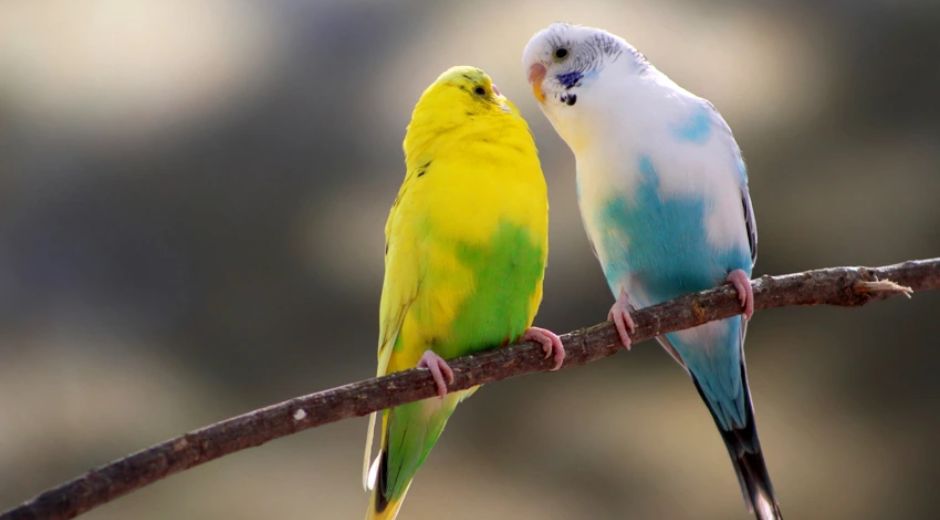Companion Birds: Emotional Intelligence in Feathers
Companion Birds: Emotional Intelligence in Feathers
There is a unique kind of companionship that comes from living with Birds. They do not simply share space with us. They observe, respond, remember, and react in ways that reveal a depth of sensitivity many people overlook. Their presence is light yet attentive, delicate yet expressive. For those who spend time with parrots, cockatiels, finches, conures, or canaries, the realization comes slowly and then all at once: these animals are not passive decorations of the home. They are living minds, capable of forming social bonds as meaningful as any pet relationship.
To live closely with Birds is to learn a different language. It is a language of tone, posture, rhythm, and intention. Their communication does not rely on facial expressions the way mammals do. Instead, emotions express through feathers, vocalizations, eye shape, and subtle changes in breath and movement. And when humans take the time to notice, they receive a constant stream of emotional exchange.
The category Nature Journeys on https://zoopora.com exists to explore these quiet, intimate connections between humans and the living world. This journey, too, begins with attention.
The Social Nature of Avian Companions
In the wild, most Birds live in flocks. Social structure means safety, comfort, and identity. This instinct carries into domestic life. A bird sees its human family not as owners, but as flock members. They monitor mood and routine constantly. They recognize voices, footsteps, laughter, and silence. Many can even sense tension or calm long before we speak it.
Parrots, for example, display behaviors that mirror emotional alignment. If someone in the home is stressed, pace quickens, movements become tighter, vocalizations shorten. When the environment is affectionate, their gestures soften. This sensitivity is not mimicry. It is empathy shaped by millions of years of group survival.
Scientific perspectives support this understanding. Research into avian cognition continues to reveal how advanced these animals truly are. For those who want to explore the science further, resources such as National Geographic offer accessible and insightful educational material:
https://www.nationalgeographic.com/
Emotion, for Birds, is not abstract. It is embodied.
How Birds Communicate Affection
A bird’s way of expressing care is subtle. Understanding their communication is a journey of presence.
A few of the ways they show connection:
-
Head Tilt and Soft Vocal Sounds
A quiet chirp paired with gentle eye contact signals recognition. -
Preening Your Hair or Clothes
In flocks, preening reinforces trust. When done to humans, it is an intimate gesture. -
Relaxed Wings and Fluffed Feathers
Comfort can be seen in softness. -
Choosing to Sit Close
Birds value choice. If they choose you, it is meaningful. -
Mirroring Rhythm
They align their body movement to your breathing or tone of voice, showing emotional attunement.
These expressions are small, but they form the foundation of relational depth.
Intelligence Beyond Assumptions
For decades, the cognitive abilities of Birds were underestimated simply because their intelligence looked different from mammals. But research and real-world observation continue to change the narrative.
Some species solve puzzles more complex than many primates. Others use tools, store memories of thousands of food locations, or communicate in structured sequences of pitch and rhythm. Parrots in particular demonstrate vocal learning and emotional memory that reflect profound awareness.
One of the most telling indicators of intelligence is grief. Many Birds show signs of mourning when a companion is gone. They search, call, and reduce activity. This emotional depth is undeniable.
Discussions on behavioral adaptation and emotional intelligence in animals increasingly appear in cross-discipline forums about environment, community, and interaction, such as:
https://businessforumhub.com/
The emotional world of Birds is vast. We are only at the beginning of understanding it.
Creating a Supportive Environment at Home
Living with Birds requires thoughtful care. Their emotional and physical well-being depends on a few essential principles:
Consistency in Routine
These animals thrive on predictable patterns. Feeding, sleep, and social time should follow a steady rhythm.
Environmental Stimulation
Rotate toys, offer branches, safe chewing materials, and interactive play. Boredom is distress.
Respect for Autonomy
Never force touch. Trust grows from patience, not demand.
Natural Light and Gentle Sound
Soft morning light and calm tone foster reassurance.
Quality Social Interaction
They need presence that is genuine, not occasional background attention.
Caring for Birds is not a task. It is a process of reciprocation.
When Trust Takes Time
Some birds come from shelters, stressful environments, or previous homes where bonding was misunderstood. They may arrive cautious or distant.
The way forward is not dominance or correction. It is gentleness, predictability, and waiting.
Sit near, not over. Speak softly. Move slowly. Let silence lead. A bird who chooses to approach has made a profound decision. This kind of trust cannot be accelerated. It must be earned.
The reward is real connection, mutual recognition, and shared calm.
Aging Birds and Emotional Continuity
As companion Birds grow older, their pace may soften, but their emotional bond deepens. Older birds often become more affectionate, more reflective, and more connected to daily rhythms. They remember your presence, your voice, and your energy. To grow alongside them is to learn a different sense of time.
Caring for an aging bird can involve:
-
Softer perches
-
Warmer resting zones
-
Gentle handling
-
Shorter but consistent play sessions
-
More time simply being together
Love becomes slower, quieter, and more profound.
The Relationship That Grows You
To share life with Birds is to become more attentive, more patient, more aware of tone, breath, and emotion. They teach us how to notice subtle change, how to communicate without force, and how to be present in ways we often forget in daily life.
Their intelligence is not loud. Their affection is not dramatic. Their connection is felt, not displayed.
This is companionship that shapes the way we move through the world.
Conclusion
Companion Birds offer a relationship defined by sensitivity, memory, and quiet companionship. They call us into slower presence. They remind us that communication does not need many words. And they reveal that emotional intimacy can be delicate, light, and deeply meaningful.
To live with them is not simply to care for a pet. It is to participate in a shared life.
Wildlife Behavior Curiosity

Training and Trust: Building a Stronger Bond with Your Pet
Discover why biodiversity is vital for ecosystems, climate balance, and human survival, and how conservation protects life’s intricate web.

Biodiversity: The Foundation of Earth’s Living Systems
Discover why biodiversity is vital for ecosystems, climate balance, and human survival, and how conservation protects life’s intricate web.

Adaptation: How Animals Evolve to Survive Changing Worlds
Explore how adaptation helps animals survive climate shifts, predators, and new environments, revealing nature’s incredible resilience.












